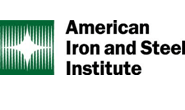Steel Markets

OSHA’s Proposed Silica Exposure Rule Meets Opposition
Written by Sandy Williams
September 17, 2013
A group of construction industry trade associations have formed the Construction Industry Safety Coalition in response to a proposed OSHA rule on crystalline silica exposure.
In an August 23 website posting, the Occupational Safety and Health Administration recommended a reduction of the permissible exposure limit for breathable silica.
“Exposure to silica can be deadly, and limiting that exposure is essential,” said Dr. David Michaels, OSHA’s assistant secretary of labor. “Every year, exposed workers not only lose their ability to work, but also to breathe. This proposal is expected to prevent thousands of deaths from silicosis-an incurable and progressive disease-as well as lung cancer, other respiratory diseases and kidney disease. We’re looking forward to public comment on the proposal.”
Crystalline silica is a mineral component of the earth’s crust, most commonly occurring as quartz, and is found in industrial materials like sand, stone, rock, concrete, brick, block, and mortar. A fine breathable dust occurs when the materials are cut, sawed, ground, drilled or crushed. Sometimes known as “deadly dust,” exposure is common for workers in the construction industries, pottery manufacturing, and foundries and in fracking operations in the oil and gas industry.
According to the National Institute of Occupational Safety and Health, breathing silica dust is “associated with the development of silicosis, lung cancer, pulmonary tuberculosis, and airways diseases. These exposures may also be related to the development of autoimmune disorders, chronic renal disease, and other adverse health effects.” OSHA says revising 40-year-old exposure limits will save nearly 7000 lives and prevent 1600 new cases of silicosis per year.
The Coalition fears the proposed rule will place unnecessary expense and burden on the construction industry. The Associated Builders and Contractors estimates the cost of complying with new regulations could run as high as $1 billion to $2 billion per year.
“OSHA’s proposed rule is a good starting point,” said Tom Skaggs, Chairman of MCAA’s Safety and Health Committee, and Vice President – Safety for the Murphy Company in St. Louis, MO. He added, “Several provisions in the proposed rule appear unnecessary for worker protection, and most likely will not be feasible for many construction firms. It is my hope that, by working with OSHA on the solution, MCAA and the coalition will be able to develop a practical rule for worker protection.”
OSHA emphasized that the proposal is not a final rule and encourages commentary and participation in public hearings to develop a ruling that “ensures healthy working conditions for employees and is feasible for employers.”

Sandy Williams
Read more from Sandy WilliamsLatest in Steel Markets

AISI: Raw steel production bounces back
Domestic mill production rebounded last week, according to the latest production figures released by the American Iron and Steel Institute (AISI). Production had been historically strong over the summer months before softening in early October.

US sets Section 232 tariffs on trucks and buses
Medium- and heavy-duty trucks (MHDV) and buses imported to the US will start being charged Section 232 tariffs beginning Nov. 1.

Hot-rolled sources say demand continues to dwindle, prices feel arbitrary
Genuine demand, they stated, will return when the market feels stable again.

FabArc Steel Supply completes projects in Mississippi, Georgia
FabArc Steel Supply announced this week the completion of two large-scale projects in Georgia and Mississippi.

Thin demand keeps plate prices hovering at lowest levels since February
Participants in the domestic plate market say spot prices appear to have hit the floor, and they continue to linger there. They say demand for steel remains thin, with plate products no exception.
